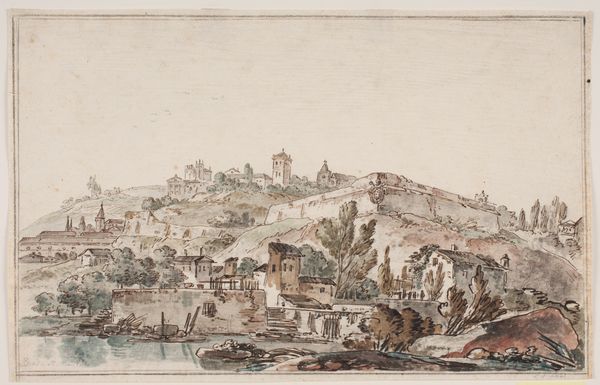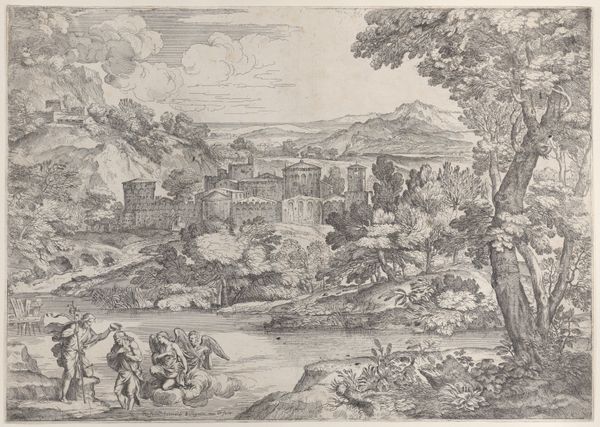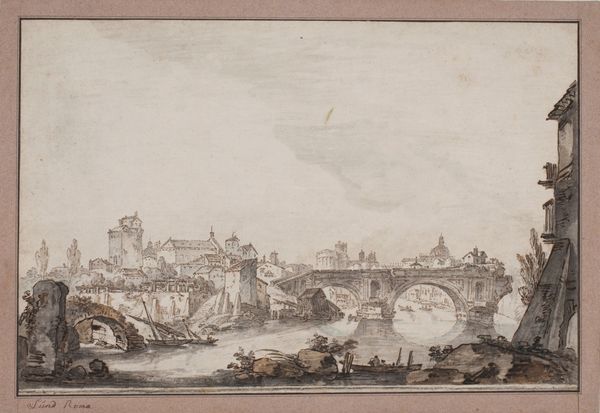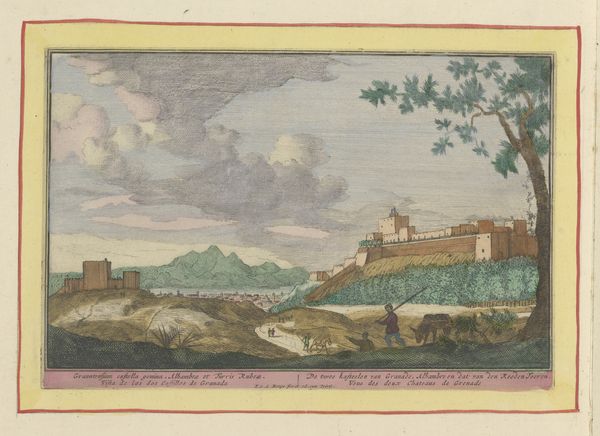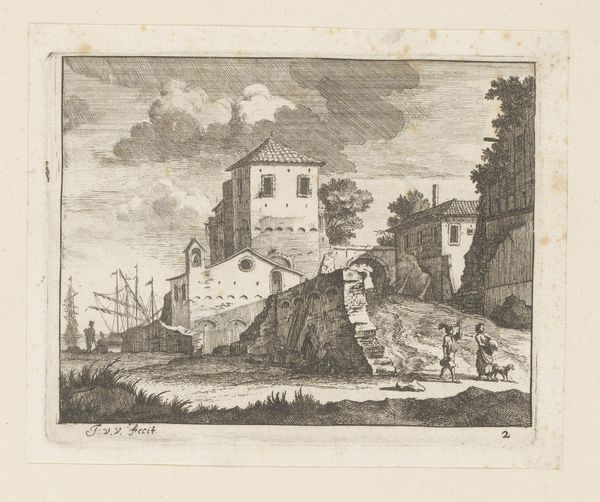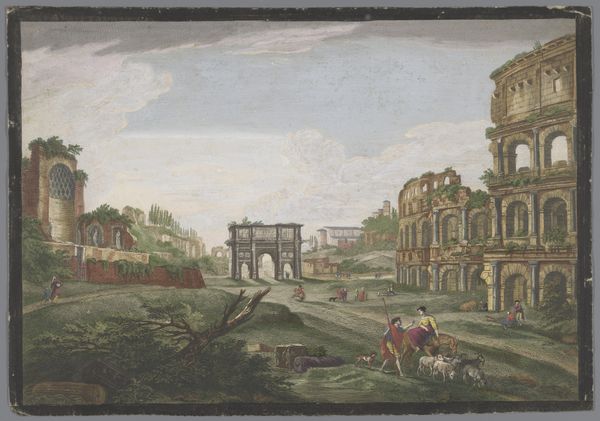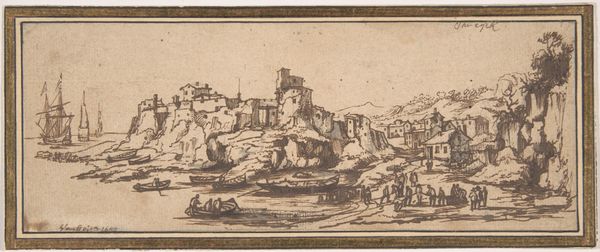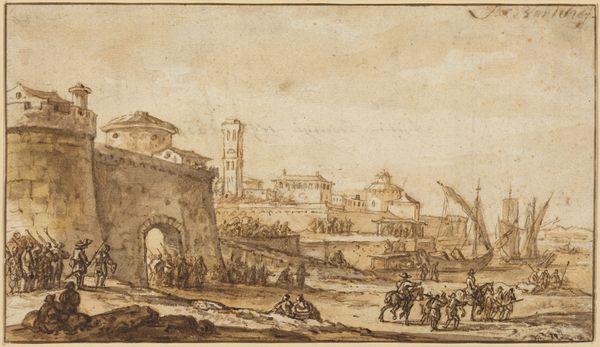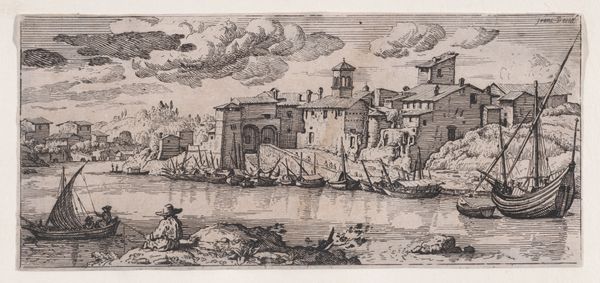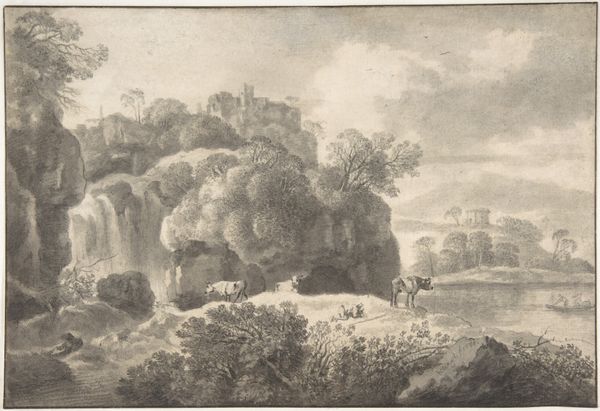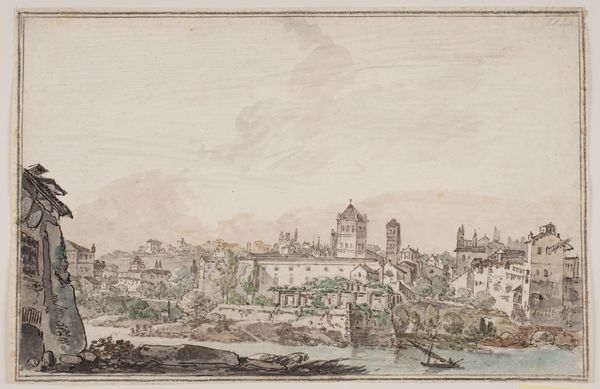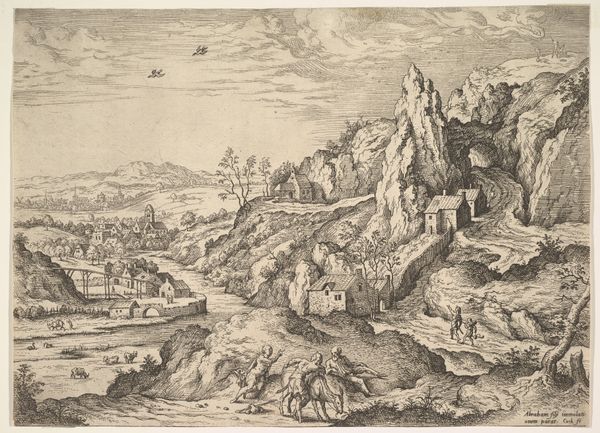
Gezicht op de Engelenburcht en de Engelenbrug over de rivier de Tiber te Rome 1759
0:00
0:00
painting, print, etching, watercolor
#
painting
# print
#
etching
#
landscape
#
watercolor
#
coloured pencil
#
cityscape
#
watercolor
#
rococo
Dimensions: height 359 mm, width 503 mm
Copyright: Rijks Museum: Open Domain
Curator: This delicate print, "Gezicht op de Engelenburcht en de Engelenbrug over de rivier de Tiber te Rome," dating to 1759, is attributed to Jean Daullé. It combines etching and watercolor. The work resides in the Rijksmuseum collection. What are your initial thoughts? Editor: It's surprisingly...peaceful. Despite depicting such iconic, historically loaded architecture, there's a definite lightness to the scene, a charming quality about it, especially with the gentle colors and almost decorative figures along the Tiber. Curator: The Castel Sant'Angelo, or the Mausoleum of Hadrian, began as a monument to imperial power, later repurposed as a papal fortress, looms in the image. Its evolution in form and function reflects a continuous transformation of authority and cultural memory, doesn't it? Note also St. Peter's Basilica in the background, a strong symbol of the Vatican's temporal influence. Editor: Yes, but let’s look closer at the materials and craft. This isn’t just an image of Rome; it’s a product. Etching allowed for detailed line work to delineate the buildings, while watercolor added those delicate, almost pastel-like hues. What kind of labor would go into creating and distributing something like this in the 18th century? Were these widely available prints? The process itself interests me. Curator: Daullé likely wanted to capture and then cater to a growing fascination with the antique past during the Rococo period, portraying Rome as both a site of grand history and contemporary vibrancy. It speaks to a nostalgic yearning but also solidifies cultural continuity. Editor: And I'm curious about the materiality of that yearning. Think about the paper, the pigments. These colors—how were they sourced, produced, and sold? The artistic choices depend so heavily on available materials. Rococo wasn’t just an aesthetic, it was a way of procuring, and consuming beautiful things. Curator: I'm drawn to the figures along the riverbank; they almost feel like stock characters in a pastoral play. These little scenes, are they supposed to ground the viewer, providing context for the vast history surrounding them? Do they connect us to our collective memory, as viewers of the past? Editor: Perhaps those small figures weren't incidental, but the subjects—workers who move the goods coming in and out of Rome, sustaining the grand scene behind them. Curator: Ultimately, this artwork reminds us of our lasting relationship with iconic structures. Editor: Absolutely, and this exploration reminds us how artistry relied on labor.
Comments
No comments
Be the first to comment and join the conversation on the ultimate creative platform.

